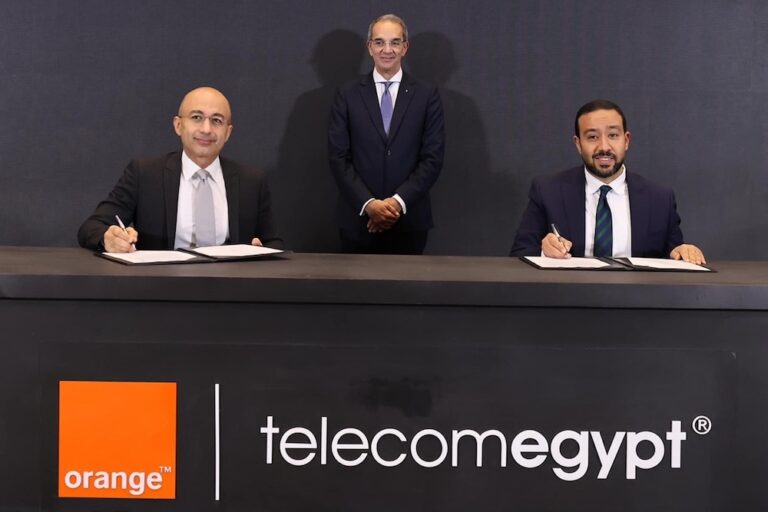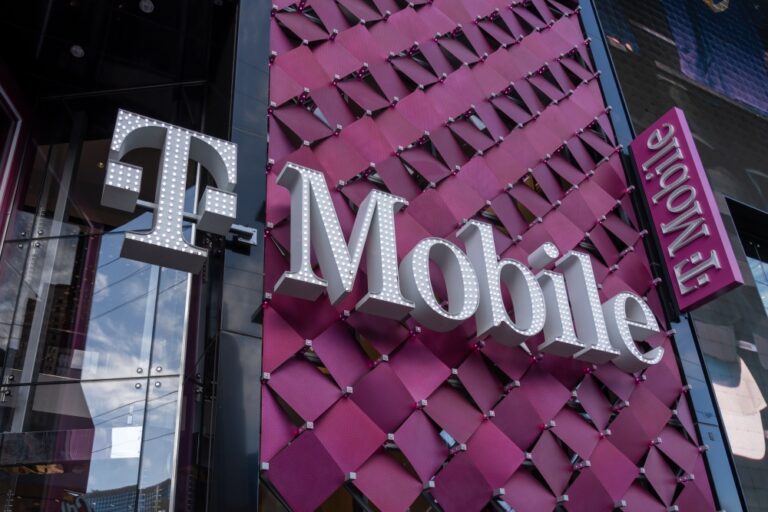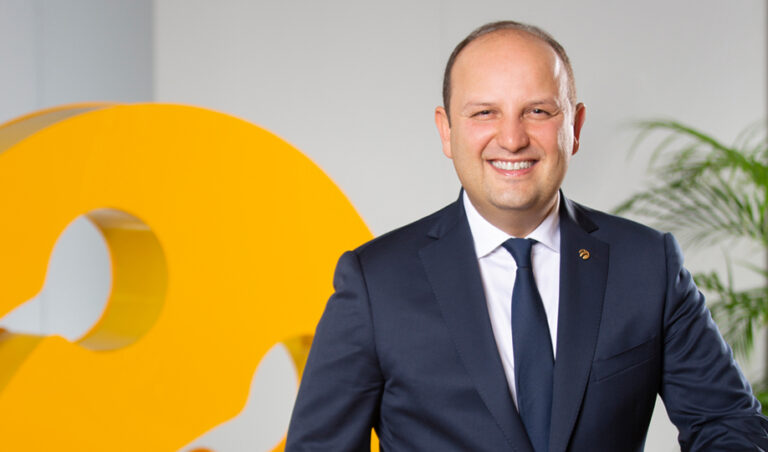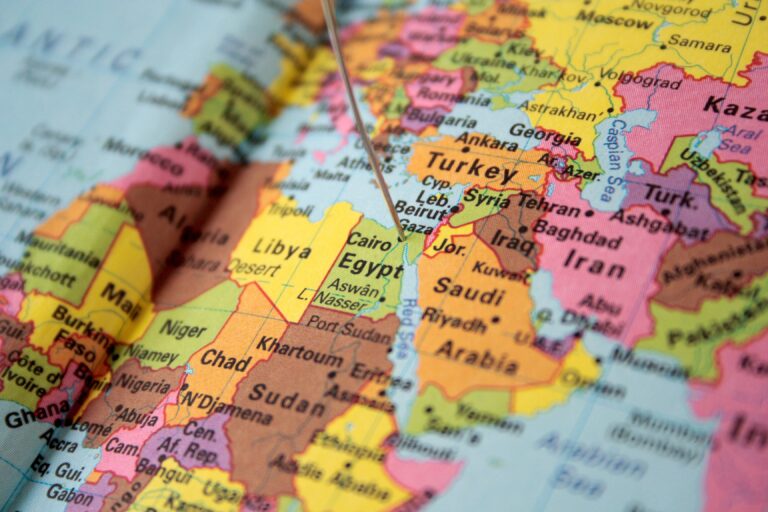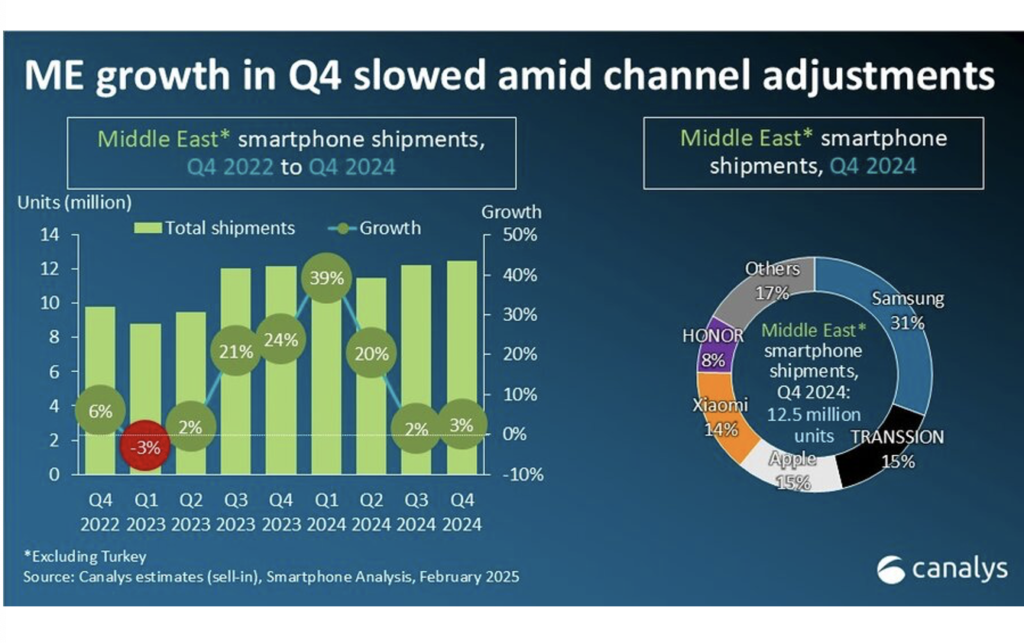Partner content: Yann Chevalier, Co-founder and CEO of Intersec, talks to Annie Turner about the company’s roots, evolution and future plans, powered by a platform-based operational and commercial model.
Intersec offers insights into adapting for sustained success
When Intersec launched, it disrupted the business mobile messaging market, enabling enterprises to get their campaigns out to their subscriber base within half a day. The norm back in 2005 was three or four weeks. As Chevalier says, “We brought speed into marketing. – that’s the first evolution that the company enabled, thanks to our technology”.
Intersec’s next major milestone was tackling telcos’ data, starting in 2012, before Big Data in telecoms really hit the mainstream, around 2016. Many network operators have spent a lot of time and money trying to tame and extract value from the treasure troves of data from their networks. Most have experienced mixed results at best.
Principal challenges
Chevalier notes there were two principal challenges – collecting data and making it usable, and figuring out how to monetise it, having noted that hyperscalers had built their businesses from the ground up to make money from their data.
Intersec grappled with and succeeded in both challenges through its purpose-built platform, enabling contextual marketing. Put another way, helping telcos turn data into a really useful tool for improve customers’ experience and expand their reach.
The last decade or so has seen Intersec focus on helping its customers identify the use cases that would create more value and/or revenues, at a time when the amount of traffic they carry has rocketed, but revenues have not.
As Chevalier says, “Better marketing and better knowledge of the subscriber…helps them to sell more, to be more relevant and to drive their historical revenue, which is an important use case.” He adds, “But looking at data can make sense for other verticals.”
Value to other verticals
For example, banks can check a credit card transaction made abroad by asking an operator if that customer’s phone is in the country while the customer is paying their hotel bill, which can massively reduce fraud. Note the credit card company informs customers that it will carry out such authorisations in very specific circumstances in its terms and conditions.
In other verticals, massive volumes of anonymised, aggregated data can be used to gain insights. For instance, during the pandemic, Intersec contributed population movement models to the relevant Ministry of Transportation and Ministry of Health in France, so that vaccines and supplies to hospitals went were they were most needed at the right time.
There are many other examples of operators’ location data being used to boost public safety, from in emergencies such as flooding to public warning systems, advising people to move or not move out of an area, as appropriate. The technology can also be used to accurately locate people calling for help through public safety access points, cutting the amount of time it takes to rescue them.
Intersec’s platform is central to them all and covers something like 100 operators in up to 45 countries. Chevalier says, “We effectively crunch the data of about 1 billion subscribers, which, as global population [of mobile users] is 7 to billion, that is a significant market share”.
Another big benefit of the platform-based system is that it can centrally control compliance with local security and data privacy regulation, having had to comply with the very stringent GDPR in the European Union since it was launched. This takes the onus off operators.
Enter AI
Chevalier observes that many new algorithms have been produced in the last five to seven years, “meaning lots of products in many industries required data scientists…to use…and really leverage the data with modern tools.
“I believe the next step is for AI assistance to help business end-users to use the algorithms in the most productive way. Instead of having a toolbox which is too large for you, AI systems should soon be able to understand what we need.”
Examples of how he thinks AI will contribute include public warning systems for flooding or major accident, say: a situation where the authorities need to send differentiated instructions depending on whether people are very near the accident site or very near to the rivers. Some should stay where they are or a mass of displaced people risk making a difficult and dangerous situation worse, others need to evacuate.
Innovate and repeat
Another key to Intersec’s success is that is keeps its customers. Chevalier says, “I think there are two main reasons. The first one is our product simply works. It delivers on a promise. It does what we said it would do – the business outcome is important to our customers, whether they are mobile operators and want to generate new revenues, whether they are civil protection departments and they want to make people safer. Our product works.
“Second we invested a lot into innovation from the beginning, typically a quarter of our revenue. We have a large research and development team, and we have had that for the past 20 years.
“This gives us the opportunity to lead our segment of the market by providing state of the art technology. And by being one of the leaders in our field for innovation.”
To find out more about Intersec, visit www.intersec.com
Transcript:
Lightly edited for clarity
<Annie Turner / AT> Hello and welcome.
Today I have Yann Chevalier with me and we’re celebrating Intersec’s
20th anniversary.
Before we probe your success and how the company plans to evolve, Yann, maybe you could say a few words about your role in the company.
<Yann Chevalier / YC> Good morning. Annie. Thanks for having me.
So I am the CEO of Intersec, which turned 20 years old last month.
And actually, I’m one of the co-founders of the company. I’ve been its CEO since, since the beginning.
And therefore, I’ve been involved in all stages of the growth of the company since inception.
<AT> Oh, wow.
Okay, so, how would you describe Intersec’s journey unfolding over the last two decades?
What would you say be the main milestones, perhaps.
<YC> Well, I think it’s a very interesting one, in the sensethat the landscape of our customers
has changed.
Their strategic priorities have changed as well.
See, what you could call state-of-the-art technology, has tremendously evolved over the years.
So we launched Intersec as a company which was, back in the days, into messaging, mobile messaging. People were helping telecom operators to improve the speed at which they could reach out to customers through SMS, MMS and mobile email. Back at a time, when messaging wasn’t as big as it is today. You know, teenagers didn’t used to have a phone and they were not sending a thousand texts a month.
And back then, really the transition for which we accompanied our customers and enabled them to make progress, was with marketing campaigns.
We gave them the speed of reaching out to their subscriber base, within half a day, where it usually took three, four weeks.
So we brought speed into marketing. So that’s the first evolution that the company enabled, thanks to its technology.
This kept us busy from 2005 until 2010, 2012, maybe.
And ever since we’ve been into big data in the field of telecommunications, where we try to help our customers to collect their data flowing through their networks, flowing through their information systems, flowing through their hundreds of platforms, and make sense of it for their benefit and for the benefit of their subscribers.
<AT> You must have found that very challenging because telcos have so much data.
And also very famously, it tends to be siloed and many different formats and so on.
<YC> Yes, absolutely. And actually, that’s what was interesting from the beginning.
You know, the challenges the operators had, in Europe and other developed markets, let’s say 12 or 15 years ago was to sort of touch the data.
It was, flowing through the network. It was difficult to capture. And they were wondering whether they could make sense of the data, whether they could generate more business
with the data.
At the point where the likes of Amazon, Netflix, etc. were using usage data in order to improve the quality of experience of their own subscribers and customers.
So the telecom operators wondered to what extent they could use the same recipe, whereby the amount of data that was flowing through their network was immense compared to standard usage data that you would find, on the information system of the big guys.
So that was one challenge.
The other one was – how do you make money out of it? How do you generate more revenue?
And is it more by getting to better know your subscribers so as to develop a tailored relationship with them, which is often referred to as a contextual marketing?
Or to what extent do you have liberty to grow new streams of revenue in new verticals, in new sectors, by creating new use cases, which somehow would be a revolution compared to their historical business, which is basically selling SIM cards to the rest of us and making sure to provide us with quality connectivity to the world.
<AT> So – a pioneer in helping telcos turn data into a really useful tool for customer experience and reach.
Okay. So, what’s driving Intersec’s growth and strategy at this stage of your journey?
<YC> What we’ve been trying to do for the past 8 to 10 years is to help our customers to identify these use cases that would create further value and/or revenues, at a time where it’s a challenging position for the operators to be supporting connectivity at the speeds and with the amount of data that we know today, while they do not capture that much of the revenue, which is at stake for all the people who deliver content to their subscribers and customers.
So, we’ve been working with them on better marketing, better knowledge of the subscriber,
which evidently helps them to sell more, to be more relevant and to drive their historical revenue, which is an important use case.
But also looking at the data, it can also make sense for, as I said, other verticals.
As an example, to fight against fraud in the banking system, it is important for the banks
to be able to check whether the credit card transaction made abroad is legitimate or not, which they can do by asking the operator if your phone while you are paying your hotel room in a specific country, if your phone is in that country at the same time, which is basically checking the location of your phone in very specific circumstances whereby you have authorisations, as per the terms and conditions of your credit card and this allows to avoid fraud, which would be detrimental to customers.
So that’s a very nice use case, for which operators can charge a good amount of money to the banks because it avoids massive amounts of frauds.
And this is an interesting example, how the historical business of the operator can be useful to other sectors. So that’s one example of a commercial use case.
Others relate to getting the data, aggregate data, anonymize it and then try to build insights.
For example, in the Covid pandemic, we were very much involved in providing population movement models to the relevant Ministry of Transportation, Ministry of Health, in order to help them to forecast the evolution of the epidemics and prepare the reaction, the State reaction on the ground, by orienting vaccines or supplies to hospitals based on the data.
So that’s the second example.
And looking at it, from the perspective of a contribution to society, effectively public safety,
something where the data of the operators has a lot of value. And therefore for the past 5-6 years, we also turned to public warning systems as well as emergency call location, where basically our technology is deployed at the operators and used in combination with firefighters, Ministry of Interior, civil protection departments.
So the data of the telecommunication operators combined with our technology enables government to communicate in emergency situations or to send support to victims in case they need it.
<AT> So, a really broad range of applications from sort of preventing fraud to public safety.
So it’s very wide ranging, the potential application of your technologies.
<YC> Yes, absolutely.
We have this platform strategy whereby we help the operators to collect their data.
Mobility is a big thing in the data in the sense that the operators have a unique perspective on where we are, and they can use this in an aggregated and anonymised manner, or they can use this in a subscriber-centric manner.
And this is also important for them at the time of connected cars, connected factories, to find the ways to develop their revenue and benefit from the digital transformation to the same extent as other players of the tech industry.
<AT> So that platform-based business and operational model is absolutely at the core of everything that you do.
<YC> Yes, absolutely.
Our current span is close to 100 customers in 40, 45 countries.
So we effectively crunch the data of about 1 billion subscribers, which, thinking of the 7-8 billion (global population), is a significant market share.
And yes, effectively, we try to help our customers depending on their geographies, they may have different strategic priorities, or they may have different opportunities for revenue growth.
And our large portfolio of use cases all enabled by the platform, is a good strategy in my view.
<AT> Okay. And does the platform also take care of the different compliance in different places as well with regarding data and privacy and all that stuff, which is complex but essential?
<YC> It’s crucial. It’s absolutely crucial being a European company, we’re based in France, we had to abide by GDPR from the early days.
And having to implement products that respect the most stringent regulation in the world is effectively extremely helpful because wherever we go overseas, the regulation would be similar or, close to what is required by the GDPR.
Therefore, we had to adapt the functions of our products so that they help our customers to abide by the regulations.
And as I said, some of the use cases, are more subscriber-centric, in which case opt-in and subscriber consent, is required.
Some others are not subscriber-centric. They leverage aggregated anonymised data. In that case, we have more leeway, to do more with the data without having to collect a consent, as long as the data cannot be reverted, as long as the insights generated through the data do not allow to identify anyone.
<AT> Okay. So long as long as it’s anonymised.
<YC> Yes.
<AT> So now we were it’s an interesting juncture and I’m wondering, in what ways is AI transforming your applications?
<YC> I think we are at a very interesting point in time, where over the past 5 to 7 years, AI enabled to build lots of new algorithms, which are above what scientists or computer
science engineers were thinking of.
Our human brains are thinking of how to handle the data using rules. It’s how we think on a daily basis. We make decisions based on the data, based on thresholds, based on comparison.
And as such, machine learning has brought a new way to look at data, by spotting something which is sort of a pattern and start to generate insights out of this.
Now, lots of algorithms have been built, meaning lots of products in many industries required data scientists in order to use the data and really leverage the data with modern tools.
I believe the next step is for AI assistance to help business end-users to use the algorithms in the most productive way.
So instead of having a toolbox which is too large for you, AI systems should soon be able
to understand what we need, what we want to do is a piece of software, and from there on, they should be able to trigger the relevant algorithms to see which of them provide meaningful results and eventually provide us, as a business user, with the desired outcome.
So I think what we are going to see over the next few years is maybe not new algorithms,
but a better orchestration of existing algorithms so as to provide business user with a much faster answer to their needs.
<AT> So it’s about disguising the complexity as far as the end user is concerned and trying to get them to where they want to be faster and more efficiently.
<YC> Absolutely.
<AT> So talking about AI, how do you think it’s going to contribute? What are the use cases going to be? Can you give me some examples please?
<YC> Yes, absolutely.
So back to public warning systems whereby a civil protection department needs to send evacuation instructions to the population in a specific area, for example, river floodings,
or after an industrial accident.
They may need to manage lots of people and they actually may need to send differentiated instructions depending on whether people are very near the accident site or very near to the rivers, and depending also where there might be a bit far off.
So, they may tell people near an accident site to evacuate, and they might tell people who are remote enough not to worry and keep doing what they are doing, because people are constantly moving and so are our smartphones.
They will need to keep in mind who they send a message to while, effectively, they don’t have the phone numbers. The firefighters, civil protection, whenever they send evacuation instructions – they don’t have the phone numbers. The operators do not reveal private data.
And that’s where there is here a level of complexity whereby, people sending evacuation instructions, they want to send the right message to people close to the site. , they may want to send other instructions to people who are away from the site, and they may have to communicate again after 30 minutes or after one hour, depending on people were back then, upon the first message. And that’s quite difficult to apprehend.
And that’s where these AI assistants will keep in mind who received what and enable firefighters to send relevant communication as the crisis unfolds and until resolution.
This also involves displaying, for example, density maps so as to enable these firefighters to understand where the people are actually evacuating because they can see the colours on the maps that are changing, or whether something might be blocking people, in which case they might need to send more teams on the site.
So these would be the sort of day-to-day difficulties whereby there is no good answer at the moment, while these AI assistants will offer much more opportunities to the end users.
<AT> And I suppose also you don’t want to displace people unnecessarily because that adds
to the chaos, doesn’t it? And the difficulty of addressing the situation.
<YC> Exactly. You got it.
<AT> Now, Yann, you have many long standing customers. Why do you think they stay loyal to your company?
<YC> Well, I tend to think that there are two main reasons.
The first one is – our product simply works. It does. It delivers on a promise. It does what we said it would do. And as the business outcome is important to our customers, whether they are mobile operators and want to generate new revenues, whether they are civil protection departments and they want to make people safer. Our product works.
And these are complex systems, as you said, capturing tremendous amounts of data. Therefore, when it works, why would you change?
Second – we’ve been investing a lot into innovation from the beginning, typically a quarter of our revenue. We have a large research and development team, and we have had that for the past 20 years.
So this gives us the opportunity to lead our segment of the market by providing state-of-the art technology and by being one of the leaders in our field for innovation. Therefore our customers remain loyal because they see good use cases coming from us, on a regular basis.
<AT> Okay. So you’re constantly offering them more.
<YC> Yeah. Absolutely.
<AT> Yann Chevalier, thank you very much.
<YC> Thank you Annie, Thank you very much.


